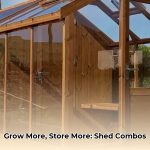Blending Beauty and Practicality: Exploring Simple Modern Homes
Imagine a home that’s both stylish and budget-friendly, filled with open spaces and bathed in natural light. This is the allure of simple modern house design, where functionality and elegance intertwine. This comprehensive guide delves into this captivating architectural style, exploring its core principles, diverse expressions, and practical considerations for realizing your dream home.
What Defines a Simple Modern House?
Simple modern houses distinguish themselves through their clean aesthetics and emphasis on efficiency. While often associated with minimalism, this style encompasses a broader design philosophy. Key characteristics include:
- Clean Lines and Geometric Shapes: Straightforward designs and geometric forms create a sense of order and spaciousness, defining the visual language of these homes.
- Abundant Natural Light: Large windows, skylights, and open floor plans maximize natural light, fostering a bright and welcoming ambiance.
- Seamless Flow and Openness: Interior spaces connect seamlessly, promoting a sense of spaciousness and fluidity within a smaller footprint.
- Minimalist Influence: While not exclusively minimalist, this style often incorporates minimalist principles, prioritizing functionality and thoughtful simplicity in décor and furnishings.
A Spectrum of Styles: Exploring Variations Within Simple Modern Design
The beauty of simple modern architecture lies in its adaptability. It’s not a one-size-fits-all approach but rather a versatile style that can be tailored to diverse needs and preferences.
- Small Modern Houses: Ideal for urban living or those embracing a minimalist lifestyle, these compact designs maximize functionality within a smaller footprint.
- Budget-Friendly Modern Homes: Achieving modern aesthetics doesn’t have to break the bank. Smart design choices, cost-effective materials, and a focus on simplicity can make this style surprisingly affordable.
- Modern Mansions: Simple modern principles translate beautifully to larger homes, creating grand spaces characterized by clean lines, expansive windows, and a seamless flow between indoor and outdoor living areas.
The Allure of Simple Modern Design: Benefits Beyond Aesthetics
The appeal of simple modern homes extends far beyond their visual appeal, offering a lifestyle that prioritizes efficiency, well-being, and a timeless elegance.
- Maximizing Space and Functionality: Every square foot serves a purpose. Open floor plans and smart layouts minimize wasted space, creating homes where every room feels connected and intentional.
- Embracing Light and Airiness: Large windows do more than just offer a view; they invite the outdoors in, bathing interiors in natural light and creating a sense of openness and serenity.
- Budget-Conscious and Eco-Friendly: Simple designs often translate to lower construction costs. Furthermore, the use of sustainable materials like wood, bamboo, or recycled metal aligns with eco-conscious values.
- Enduring Style That Transcends Trends: Unlike fleeting design fads, the timeless elegance of clean lines, natural materials, and a minimalist aesthetic ensures your home will remain stylish for years to come.
- Effortless Living and Low Maintenance: Minimalist design principles naturally lend themselves to low-maintenance living. With fewer belongings and durable materials, you’ll spend less time cleaning, dusting, and worrying about repairs.
Creating Your Dream Home on a Budget: Practical Tips for Affordability
Building a simple modern home doesn’t require unlimited resources. By embracing smart design strategies and exploring cost-effective options, you can realize your vision while staying within budget.
- Strategic Material Selection: Opt for affordable yet stylish alternatives to high-end finishes. Consider concrete flooring, exposed brick walls, or sustainable wood options like bamboo or reclaimed lumber.
- Prioritizing Functionality: Before indulging in luxurious add-ons, focus on creating a layout that truly supports your lifestyle. Prioritize a functional floor plan and essential features over extravagant extras.
- Embracing DIY Projects: Injecting some sweat equity can significantly reduce costs. Tackle projects like painting, installing light fixtures, or even building some of your own furniture to personalize your space and save money.
Navigating the World of “Modern”: Unpacking Different Architectural Styles
The term “modern” in architecture encompasses a range of styles, each with its own unique characteristics and historical context. Here’s a glimpse into some prominent modern architectural styles:
- Mid-Century Modern: Originating in the mid-20th century, this style emphasizes clean lines, organic forms, integration with nature, and the use of natural materials like wood, stone, and glass.
- Minimalist Modern: Characterized by extreme simplicity, this style strips away all but the essential elements, favoring clean white walls, bare concrete floors, and streamlined, functional furnishings.
- Industrial Modern: Drawing inspiration from industrial spaces like factories and warehouses, this style embraces raw and unfinished aesthetics, featuring exposed brick walls, concrete floors, high ceilings, and metal accents.
- Postmodern Modern: A reaction to the austerity of earlier modern styles, postmodernism injects elements of playfulness, irony, and historical references, often incorporating bold colors, geometric patterns, and eclectic furnishings.
Remember that architectural styles are fluid and often blend elements from different periods. Your simple modern home can reflect your unique taste and preferences, incorporating influences from various modern styles to create a truly personalized space.
Easiest Houses to Build: Streamlining Construction for Efficiency
Choosing a house design that prioritizes ease of construction can save time, money, and potential headaches. Here are some factors to consider for a smoother building process:
- Size Matters: Smaller homes generally require less material and labor, translating to faster construction times and potentially lower overall costs.
- Prefabricated and Modular Construction: These innovative building methods involve constructing homes off-site in a factory setting, then transporting and assembling them on your property. This approach can significantly reduce on-site construction time and minimize weather-related delays.
- Open Floor Plans: Homes with open floor plans typically require fewer interior walls, simplifying framing and drywall installation. This streamlined approach can expedite the building process.
- Alternative Building Methods: Exploring alternative building techniques, like mudbrick construction, can offer sustainable and often more affordable options. Mudbrick homes, made from earth and natural fibers, are surprisingly strong, energy-efficient, and relatively simple to build.
- Low-Maintenance Materials: Opting for durable and low-maintenance materials like metal siding or roofing can minimize future upkeep and potentially reduce long-term costs.
Bringing Your Vision to Life: Embracing the Journey of Building a Simple Modern Home
Building a house is a significant endeavor, but choosing a simple modern design can make the process more efficient and enjoyable. By understanding the core principles of this style, exploring its variations, and considering practical aspects like ease of construction and budget-friendly options, you can create a home that reflects your unique vision and enhances your lifestyle.
Remember, small house open concept kitchen and living room layouts are excellent examples of maximizing space and functionality in simple modern homes. As you embark on this exciting journey, embrace the opportunity to craft a space that balances beauty, practicality, and the timeless elegance of simple modern design.
- Greenhouse Storage Shed Combos: Your Guide to Combining Growing and Storage - April 21, 2025
- Greenhouse Shed Combo: Design, Build & Grow Year-Round - April 21, 2025
- Gingham vs. Plaid: What’s the Difference? A Complete Guide - April 21, 2025









